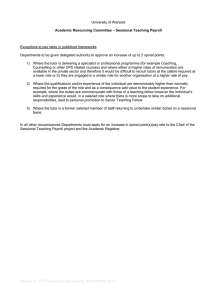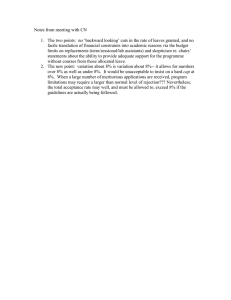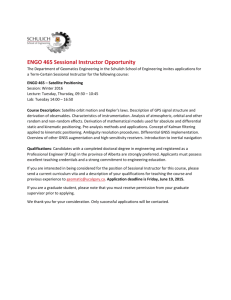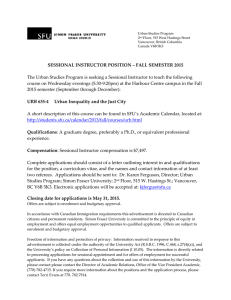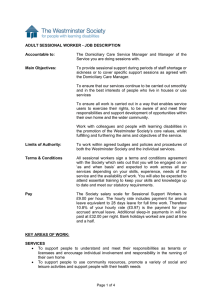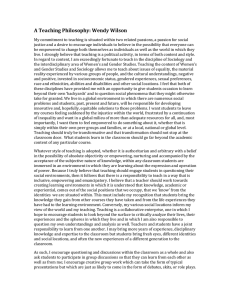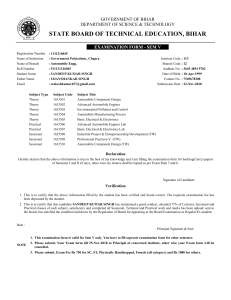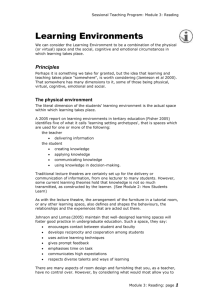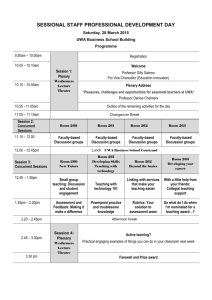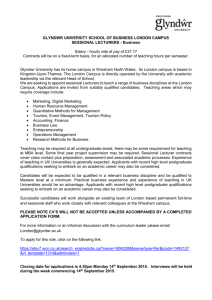Database_1 - The Computer Engineers' Blog
advertisement
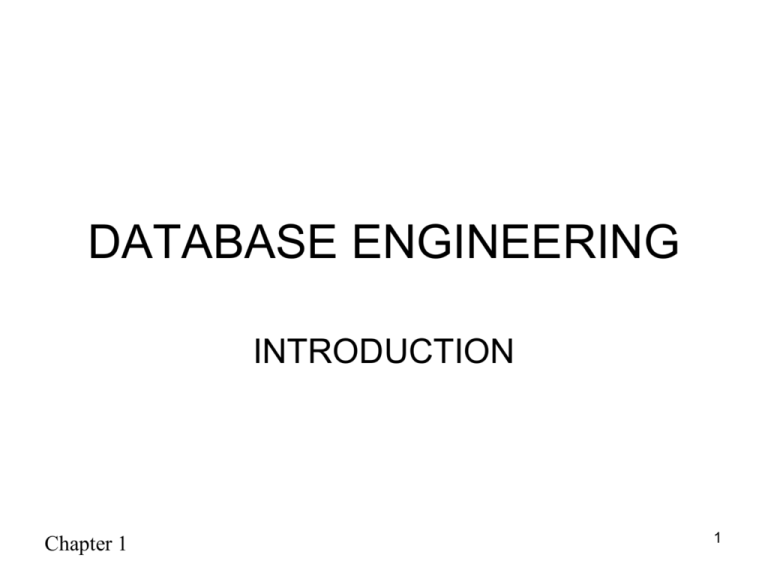
DATABASE ENGINEERING INTRODUCTION Chapter 1 1 DATABASE ENGINEERING EC-316 • Credits 4(3,1) • Text Book: Modern Database Management, by Hoffer, Prescott, MsFadden, 2008, Latest Edition • Grading Criteria: – Sessional • • • • • • Assignments: Quizzes: Sessional 1: Sessional 2: Project: Practical – Final Chapter 1 60% 8% 10% 20% 20% 8% 34% 40% 2 The Database Environment Chapter 1 3 Topics • Growth and importance of databases • Limitations of conventional file processing Chapter 1 4 Definitions Chapter 1 5 Database (Definition) In the broadest sense, a database is anything that stores data. A phone book, for instance, could be considered a database as it stores related pieces of information such as name and phone number. However, in the world of computers, a database usually refers to a collection of related pieces of information stored electronically. Aside from the ability to store data, a database also provides a way for other computer programs to quickly retrieve and update desired pieces of data. Reference: http://www.mariosalexandrou.com/definition/database.asp Chapter 1 6 Database (Definition) A database is an application that manages data and allows fast storage and retrieval of that data. Reference http://cplus.about.com/od/glossar1/g/databasedefn.htm Chapter 1 7 Database (Definition) A database is a collection of information that is organized so that it can easily be accessed, managed, and updated. Reference: http://searchsqlserver.techtarget.com/sDefinition/0,,sid87 _gci211895,00.html Chapter 1 8 Definitions (By Hoffer) • Database (Concluded): organized collection of logically related data • Data: stored representations of meaningful objects and events – Structured: numbers, text, dates – Unstructured: images, video, documents • Information: data processed to increase knowledge in the person using the data • Metadata: data that describes the properties and context of user data Chapter 1 9 Figure 1-1a Data in context Context helps users understand data Chapter 1 10 Figure 1-1b Summarized data Graphical displays turn data into useful information that managers can use for decision making and interpretation Chapter 1 11 Descriptions of the properties or characteristics of the data, including data types, field sizes, allowable values, and data context Chapter 1 12 Disadvantages of File Processing • Program-Data Dependence – All programs maintain metadata for each file they use • Duplication of Data – Different systems/programs have separate copies of the same data • Limited Data Sharing – No centralized control of data • Lengthy Development Times – Programmers must design their own file formats • Excessive Program Maintenance – 80% of information systems budget Chapter 1 13 Problems with Data Dependency • • • • • Each application programmer must maintain his/her own data Each application program needs to include code for the metadata of each file Each application program must have its own processing routines for reading, inserting, updating, and deleting data Lack of coordination and central control Non-standard file formats Chapter 1 14 Figure 1-3 Old file processing systems at Pine Valley Furniture Company Duplicate Data Chapter 1 15 Problems with Data Redundancy • Waste of space to have duplicate data • Causes more maintenance headaches • The biggest problem: – Data changes in one file could cause inconsistencies – Compromises in data integrity Chapter 1 16
